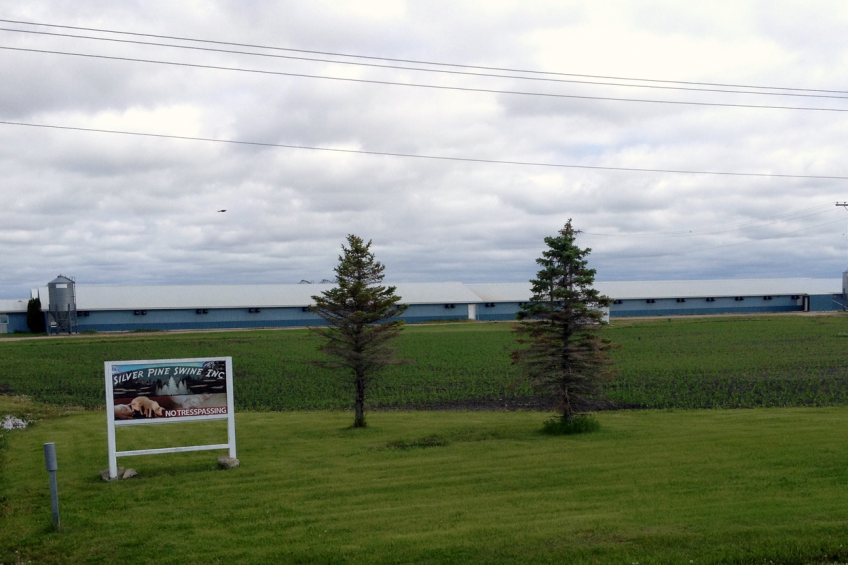Traceability in Canada is just a matter of seconds

PigTrace is an industry-led, mandatory, ?national live animal traceability initiative to ensure protection, prosperity and peace of mind for the Canadian pork industry. The ?development means that every pig that comes or goes has a trace.
By Harry Siemens
After extensive industry consultation, Canada’s federal government strengthened Canada’s livestock sector by enhancing its capacity to track animals from farm to slaughter through a mandatory national pig traceability system. The related amendments to the Health of Animals Regulations came into force on 1 July 2014 for all domestic pigs farmed for food production, including those that die on farm and cannot enter the food chain. On 1 July 2015 the regulations will include farmed wild boars.
The amended Health of Animals Regulations requires pig farmers and other pig industry custodians to keep records and report all movements of pigs, from birth or import to slaughter or export. The regulations also detail how stakeholders must identify farmed pigs and farmed wild boars. A broad range of stakeholders, including swine industry associations, provinces and territories and other federal departments developed the amendments in a series of consultations. In Canada, mandatory identification systems are already in place in the cattle, bison and sheep sectors.
Consistency
The amended regulations brings national consistency in the pig sector by building on what is already in place in some provinces, such as Alberta’s Swine Traceability System launched in 2011. In addition, mandatory pig movement reporting will help enhance the competitive position of Canadian pork in international markets. Agricultural minister Gerry Ritz explained, “A national pig traceability system will help protect the safety of our food supply and the health of the sector. It will also help reduce economic impacts associated with any future disease outbreaks and contribute to the reopening of export markets should an event occur.”
Karl Kynoch, chair of Manitoba Pork, says the ability to trace animal movements is particularly valuable when dealing with disease. “You can trace quickly where the pigs travelled when a disease shows up, use PED for example, when it shows up on a farm they need to do tracebacks,” he says. Pig trace
Jeff Clark, executive director of PigTrace Canada, says the programme is running the database, the goals are to ensure protection, prosperity and peace of mind for the Canadian pork industry and its customers. The programme helps to improve the response to animal health or food safety emergencies, minimising the impact of market disruptions and supports market access.
Clark adds that he started working on this file in 2005 with the original resolution coming from the Canadian Pork Council in 2002. “This initially originated in the BSE days, and even earlier when the United Kingdom had Foot-and-Mouth Disease so industry and government had been talking about getting a better information system here in Canada,” says Clark. “It is really to protect our industry and recently with PED virus, my colleague spent two and half days calling producers trying to do a traceback. We can do it through PigTrace in less than a minute.”
United States
The development of the PigTrace system does not bear any relationship to the recent US Mandatory Country-of-Origin-Labelling (M-COOL) legislation and therefore it has no effect on compliance with M-COOL. Nevertheless, with the system, Canada is miles ahead of its southern neighbour, which does not have an electronic movement reporting system, nor are they in the process of implementing such a system. The US had plans to implement a traceability system a couple of years ago. The majority of the livestock associations were in favour, particularly the National Pork Producers Council (NPPC), few groups and many individuals are dead set against it. The US is thinking about traceability, developing an official ear tag, and some legislated identification requirements when moving animals, particularly between states.
That doesn’t mean that in Canada no questions are being asked. Clark says there is a lot of trepidation out there on the landscape suggesting government and industry brought this down from the top. Just the sheer length of government and industry consultations giving all plenty of time to respond and voice concerns, and the outbreak of the PED virus is proof enough the timing appears to be about right.
The system in practice
For the most part, traceability works on a batch level, except for some specific health and geographic situations. There is no requirement to identify individual animals except for certain ‘high risk’ types of movements, in reality not very common. The programme guide outlines exactly when a stakeholder needs a unique animal identification.
For farm-to-farm movements, the producers simply must report a group of pigs moved between the two premises along with the license plate of the truck that moved the pigs. For pigs going to slaughter or export, they need either a tattoo or an approved tag, like a slap tattoo with the farm’s five-digit herd mark to the animal. The slaughter plant reads this ID number.
PigTrace requires reporting this data to a centralised database. Every time a stakeholder moves or receives pigs, the data recording/ read must then go to the central database, whether that pig moves once, twice, or multiple times. This reporting can happen through the web-based system, over the phone or by fax if no internet/ smartphone access is available. Data to be sent include the date, the originating premises, the type of movement (in or out), the license plate number of the truck/trailer, the number, the type of animal, the herd mark or individual ID(s) and the receiving or originating premises. The receiving premises must also report the movement, so the movements should match up in the system.
If a stakeholder thinks he or she can simply ignore the system, the Canadian Food Inspection Agency (CFIA) will send out escalating numbers of letters of non-compliance. The offender will ultimately find themselves in court. Clark says, “By and large, I’m constantly and overwhelmingly impressed by the pork industry and the amount of goodwill. I’m sure there are people that think otherwise that I may not hear from, but most want to do the right thing and understand the rationale for it.”
Hog farmers
Last but not least – what is the opinion of end users, i.e. hog farmers? Rolf Penner, a grain, special crops, and hog farmer at Morris, MB, isn’t convinced the industry nor he need this new mandatory programme. “While an interesting programme, I’m not particularly pleased with it. I’m not sure whether it will do what it is supposed to do,” says Penner. “The gist of it is when pigs come to my yard I need to report it. When the pigs leave my yard, whether going to market or cleaning up the dead pigs, I have to report it to a central agency.”
He says everyone talks about how important this information is, and how valuable it is and yet they draft him to provide the information. “Certainly there is no monetary value in it for me, as far as I can tell no one is paying me for my information. Basically another cost of doing business,” says Penner. “Years back they came out with the Canadian Quality Assurance programme. Now they tell us that isn’t enough, consumers now need this really detailed tracking system.”
PP











